If I’m responsible for growth at a B2B service company and I want a steadier stream of qualified leads without puffery, multilingual SEO is one of those moves that quietly compounds. It’s not magic. It’s structure, signals, and clean execution. The impact is simple to feel on the P&L: more right-fit prospects from the markets I care about, at lower acquisition costs.
Multilingual SEO
Here’s how I structure the first phase:
- Pick priority languages and regions by revenue potential, not vanity. I start where I can win fast.
- Choose a URL structure. Subfolders are my default because they keep authority in one place and lower ops overhead.
- Implement hreflang on the top converting pages first - service pages, pricing, and key case studies.
- Add a persistent language switcher in the header and footer. I never block bots or force redirects.
- Translate metadata and calls to action, not just body copy. Titles and CTAs move the needle.
- Localize trust signals. Use region-specific testimonials, case studies, currencies, and phone formats.
- Build per-locale reporting. Segment analytics, search performance, and CRM data for clean pipeline attribution.
- QA weekly for the first eight weeks. Check indexation, hreflang reciprocity, and internal links.
ROI and timeline in plain language:
- Quick wins in 2 to 4 weeks from technical fixes like indexable language URLs, clean hreflang, and better titles (timelines vary by baseline).
- Compounding gains over 3 to 6 months as localized content earns links, rankings settle, and production gets faster.
One more note up front. I follow Google’s documentation: use separate, indexable URLs per language or region and send strong language signals. Give the crawler something it can trust, and it will do its job. See International and multilingual sites.
Hreflang tags
What they do and when I use them
- Hreflang tells search engines which version of a page serves which language or country. If I have en-us, en-gb, and fr-fr versions of the same page, hreflang helps search engines match the right URL to the right searcher.
- I use hreflang when I maintain separate language or region URLs. I do not use it for auto-translated content without review.
How I implement
- HTML head tags on each page for most sites.
- HTTP headers for non-HTML files like PDFs.
- XML sitemaps for large sites where maintaining head tags adds noise.
Copy-ready example with self-referencing tags, reciprocal pairs, and x-default
<!-- On https://www.example.com/en-us/services/ -->
<link rel="canonical" href="https://www.example.com/en-us/services/" />
<link rel="alternate" href="https://www.example.com/en-us/services/" hreflang="en-us" />
<link rel="alternate" href="https://www.example.com/en-gb/services/" hreflang="en-gb" />
<link rel="alternate" href="https://www.example.com/fr-fr/services/" hreflang="fr-fr" />
<link rel="alternate" href="https://www.example.com/language-selector/" hreflang="x-default" />
<!-- On https://www.example.com/en-gb/services/ -->
<link rel="canonical" href="https://www.example.com/en-gb/services/" />
<link rel="alternate" href="https://www.example.com/en-gb/services/" hreflang="en-gb" />
<link rel="alternate" href="https://www.example.com/en-us/services/" hreflang="en-us" />
<link rel="alternate" href="https://www.example.com/fr-fr/services/" hreflang="fr-fr" />
<link rel="alternate" href="https://www.example.com/language-selector/" hreflang="x-default" />
<!-- On https://www.example.com/fr-fr/services/ -->
<link rel="canonical" href="https://www.example.com/fr-fr/services/" />
<link rel="alternate" href="https://www.example.com/fr-fr/services/" hreflang="fr-fr" />
<link rel="alternate" href="https://www.example.com/en-us/services/" hreflang="en-us" />
<link rel="alternate" href="https://www.example.com/en-gb/services/" hreflang="en-gb" />
<link rel="alternate" href="https://www.example.com/language-selector/" hreflang="x-default" />Region codes and syntax
- Language only: hreflang="en"
- Language with region: hreflang="en-gb" or hreflang="en-us"
- Use valid ISO 639 language and ISO 3166 country codes. The hyphen pattern matters; case is not critical to Google.
- x-default should point to a selector or a global fallback page.
How canonicals work with hreflang
- Each locale should have a self-canonical pointing to itself. See Google’s guidance on Canonicalization.
- Do not canonical from one language to another. That collapses the set and blocks visibility.
- For paginated series, add hreflang on every page in the series, pointing to the matching page number in each locale. Keep self canonicals on each page.
Cross-domain sets
Hreflang works across domains, subdomains, and folders. I can reference https://example.ca/fr-ca/ from https://example.com/fr-ca/ and vice versa if both are indexable.
Common mistakes I avoid
- Missing reciprocity. Every URL I reference must reference me back.
- Invalid codes like en UK. Use en-gb.
- Mixing http and https in the same set.
- Relative URLs. I always use absolute.
- Orphaned locales not linked from navigation.
- Omitting x-default when a language selector exists.
Language-specific URLs
I use different URLs for each language or region. I avoid cookies or query parameters for language because search engines may not index them cleanly.
Preferred structures
- ccTLDs: example.fr (see the IANA country code top-level domain list)
- Subdomains: fr.example.com
- Subfolders: example.com/fr-fr/
Recommendation for most B2B teams
I prefer subfolders. They keep authority under one roof, simplify analytics, and reduce hosting sprawl.
Examples to copy
- example.com/en/
- example.com/en-gb/
- example.com/fr-fr/
What I avoid
- Query parameters like ?lang=fr
- Auto-redirects based on IP without a choice to switch back
Slug translation and consistency
- I localize slugs for humans but keep them stable. Use UTF-8 and proper encoding.
- I’m consistent with trailing slashes across the site.
- If paths change, I use 301 redirects from the old path to the new localized path.
Internal linking patterns
- I put a language switcher in the header and footer. It links to the equivalent page on each locale, not just the home page.
- I mirror navigation and content blocks across locales. Parity helps bots and users.
Practical guardrails
- Create a sitemap per locale and submit it to the relevant search engine property.
- Translate titles, meta descriptions, headings, and alt text.
- Don’t mix languages on one page.
- Don’t hide language options behind interstitials or scripts that block bots.
Geotargeting
When I geo-target vs when language alone is enough
- I geo-target if pricing, legal notes, or service delivery varies by country - taxes, contracts, SLAs, or local support hours.
- If the content is the same and only the language changes, language targeting is enough.
How Google infers locale
- ccTLDs like .fr or .de are strong country signals.
- Hreflang regional codes like en-gb and fr-ca guide country-language pairs.
- On-page signals help. I include a local address, local phone format, local currency, and service areas.
- Server location matters less now. I prioritize speed via a global delivery approach instead.
About geo-targeting settings
Legacy geo-targeting settings in some webmaster platforms have been deprecated or limited. If I still see them on a legacy property, they can reinforce targeting for subdomains or subfolders on a gTLD. If not available, I rely on hreflang, ccTLDs, and on-page signals.
Choosing ccTLDs vs a gTLD with folders for B2B
- For most, a single gTLD with subfolders is the sweet spot. It avoids splitting authority and keeps ops simple.
- I use ccTLDs when a market is very mature, there are legal requirements, or the brand needs heavy local trust signals - and I plan for extra cost in content, links, and governance.
Duplicate content
Two practical paths I use to handle duplication across countries or languages:
1) Differentiate content per locale or region
- Shift pricing modules, case studies, regulations, and testimonials to match the market.
- Use local terminology - for example, VAT vs sales tax, SOW vs contract.
- Add a short section for market-specific proof like certifications or local partners.
2) Use hreflang when the content is equivalent
- Keep copy close when it truly serves the same intent. Cluster with hreflang so each audience lands on its version.
- Do not canonical across languages. Keep self canonicals inside each locale set.
I avoid auto-translation without a human pass. Machine output is better now, yet it still misses tone, idioms, and industry language. A light edit can save deals.
Fix near duplicates with simple modules
- Add regional FAQs, service coverage, and holiday schedules.
- Include local currency and contact details.
- Use local screenshots or interface language where relevant.
Quality checks I run monthly
- Titles, H1s, and meta descriptions are unique per locale and contain local keywords.
- Hreflang reciprocity is intact and points to the equivalent page, not the home page.
- Internal links point to the same language by default, with clear paths to switch.
- No cross-language canonicals.
- No orphaned locale pages.
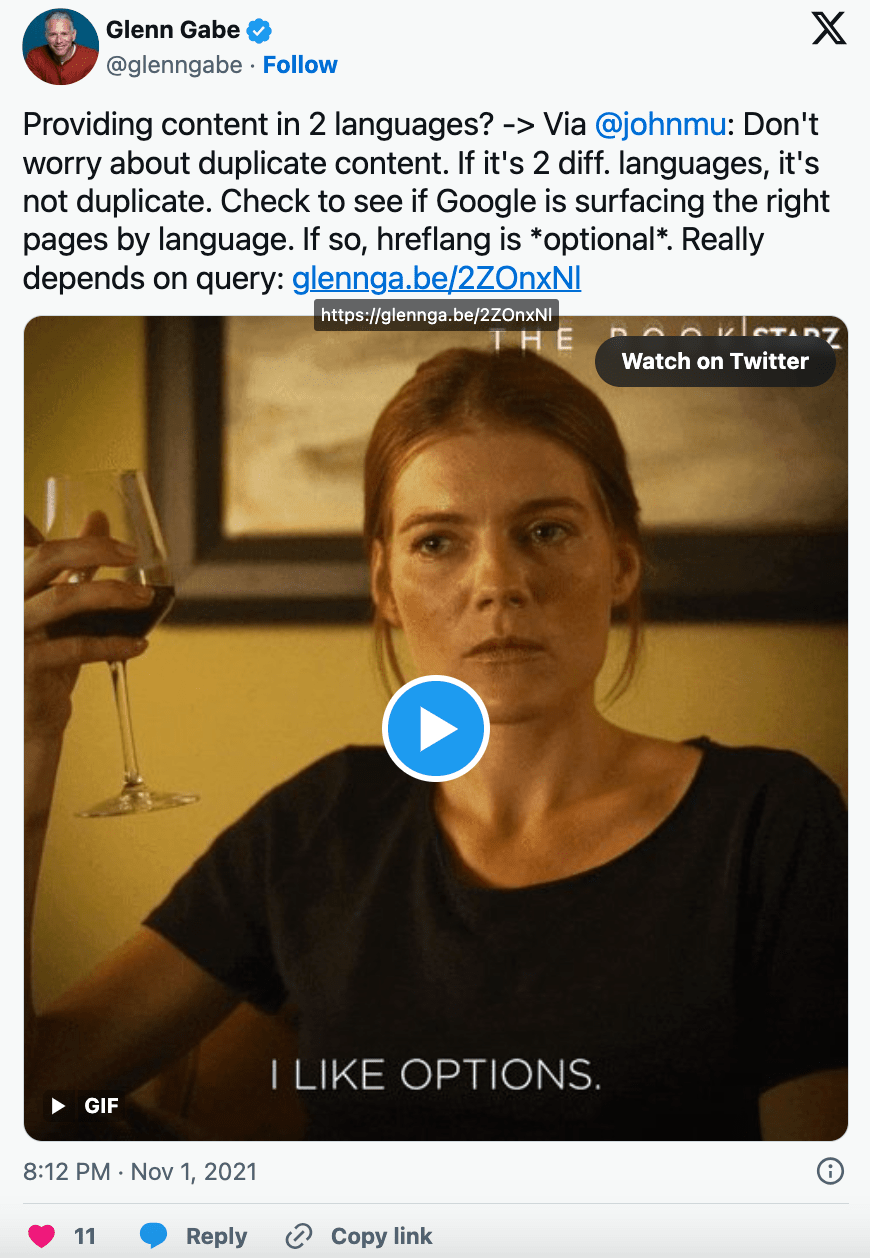
Language detection
Language detection and hreflang are not the same job. One serves users on-page. The other serves search engines.
Pros and cons in short
- Detection is great for user nudges. It can suggest a better match based on the browser’s Accept-Language header.
- Detection can hurt SEO if it auto-redirects crawlers or blocks access to content.
What I implement
- A soft banner that suggests switching. Include “Stay here” and “Go to French” options.
- Remember user choice so I don’t prompt them again.
- Always let bots access all locales. I avoid IP-based hard redirects. IPs fail with VPNs and shared networks.
Technical notes
- I treat the Accept-Language header as a hint, not a rule.
- I keep the language switcher visible on every page.
- I do not gate localized URLs behind scripts. They should render and load like any other page.
Bottom line for SEO vs UX
- I use hreflang for search engines.
- I use detection only to improve the visit experience.
On-page SEO
Make the language obvious
- Set the html lang attribute accurately on every page. Example: lang="fr".
- Translate H1s, subheadings, meta titles, meta descriptions, and image alt text fully.
- Use localized schema. Set inLanguage in Article, Product, and Organization markup.
- Match currency, dates, addresses, and phone formats to local standards.
Linking and navigation
- Add a language selector in the header and footer. Link to the equivalent page in each locale.
- Avoid interstitials that block access to content. Keep it fast and simple.
Speed and Core Web Vitals by locale
- Serve static assets via a global delivery approach to minimize latency.
- Check Core Web Vitals per locale variant. Some locales carry heavier fonts or longer words that affect layout.
- Compress localized images and use modern formats.
Indexation hygiene
- Use a sitemap per locale and submit each where you manage search presence.
- Add a separate property or view for each subfolder if you want segmented reporting.
- Noindex staging and machine-translation preview URLs only. Keep production locales indexable.
- Avoid accidental blocking in robots.txt or through headers on localized paths.
International SEO
A quick split:
- Multilingual means many languages.
- Multiregional means many countries or markets.
You can be one, the other, or both.

Rollout plan built for B2B goals
1) Market selection
- Size the addressable market with search demand, competition, and sales readiness. I start where a team can service demand without chaos.
2) Keyword research per locale
- Map queries to local intent. Terms shift - for example, managed IT vs IT support can swing by market.
- Build glossaries so translators and writers stay consistent.
3) Page mapping
- Decide which pages ship first per locale. Usually home, core services, pricing, case studies, and contact.
- Create a one-to-one map across locales to keep hreflang tidy.
4) Content operations
- Set style guides, approval steps, and SLAs. Use translation memory and term bases to keep costs in check.
- Pair human translators with subject-matter review. This protects jargon and tone.
5) QA and governance
- Lint hreflang, canonicals, and sitemaps before launch.
- Check parity across pages. No missing hero CTAs or broken forms on a locale version.
6) Ongoing measurement
- Track organic leads by locale, sales-accepted leads, pipeline value, assisted conversions, and local SERP visibility.
- Build dashboards that combine analytics, search performance, and sales data by locale - weekly visibility, monthly narrative.
KPIs that matter to a CEO
- Qualified organic leads by locale
- Sales-accepted leads and SQL conversion rate by locale
- Pipeline value created and revenue won
- Contribution margin vs paid channels
- Share of voice for priority keywords in each market
Ownership and cadence
- I assign a single owner for international SEO who carries both technical and content outcomes. No ping-pong between teams.
- I run a monthly review with clear actions. Include pages shipped, hreflang status, ranking movement, and pipeline impact.
- I rebalance markets quarterly. Shift resources toward locales with rising conversion and CAC efficiency.
A small digression that pays off: I build a shared calendar of local holidays, fiscal year ends, and industry events. It informs content timing, outreach, and sales readiness. A UK pipeline might spike in different months than a US pipeline. Planning wins here are boring and very profitable.
All of this in practice
All of this reads like a lot. It is a lot the first time. Then it becomes routine. I start with one market, ship a tight set of pages, get hreflang right, and measure like I mean it. The flywheel turns, and each new locale gets easier, faster, and cheaper.
For deeper reference, see Google’s docs on International and multilingual sites and Sitemaps, plus guidance on Canonicalization.

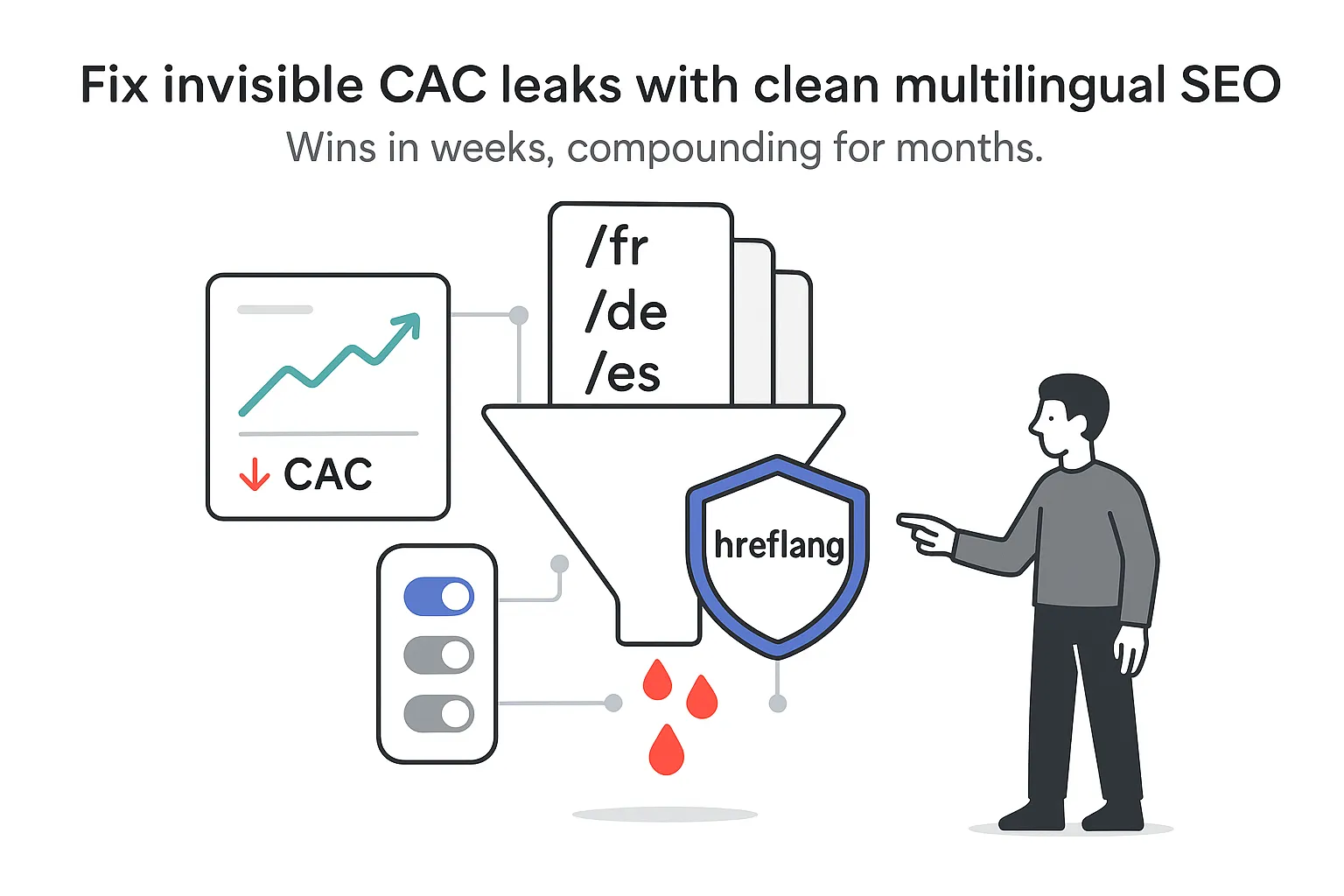

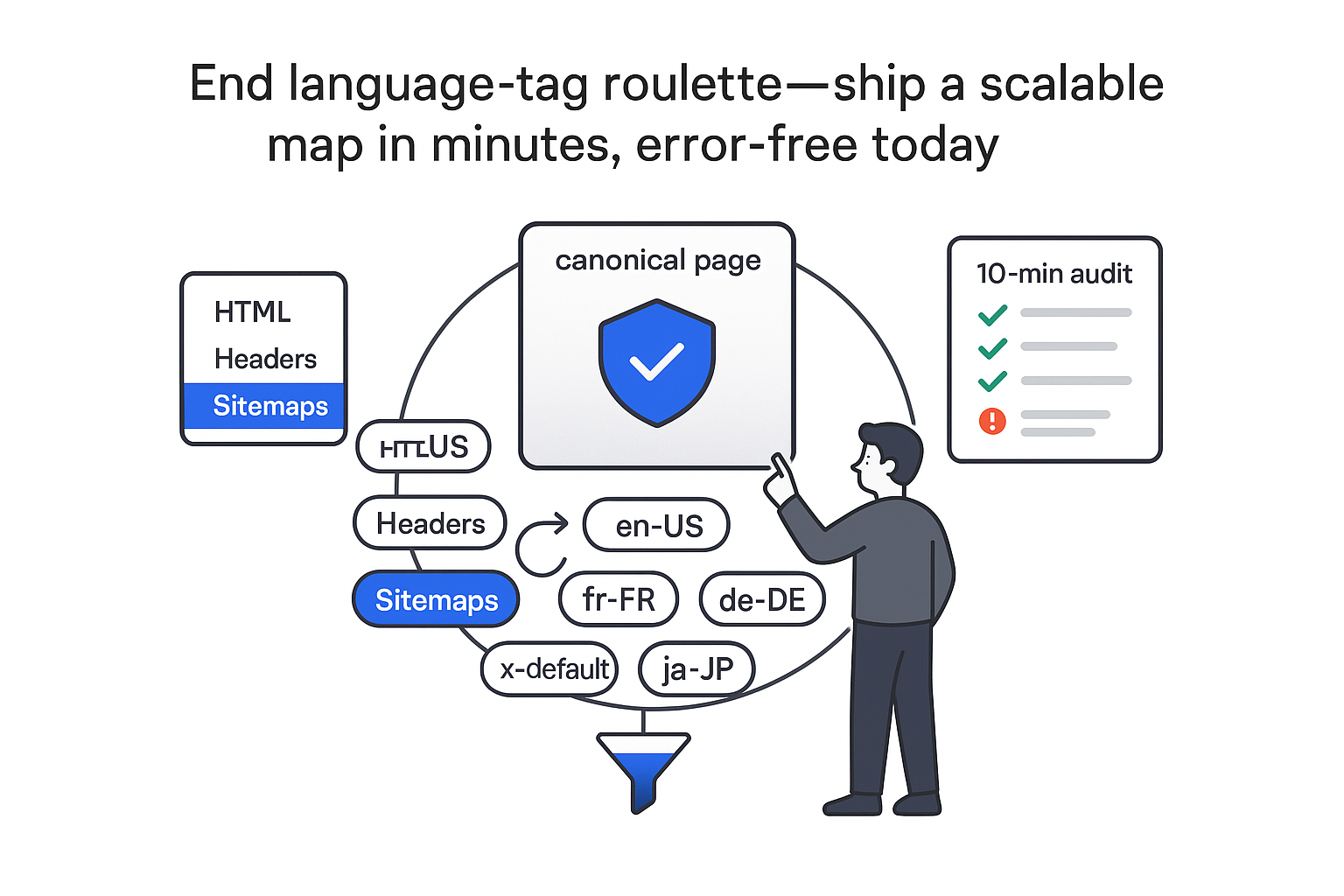
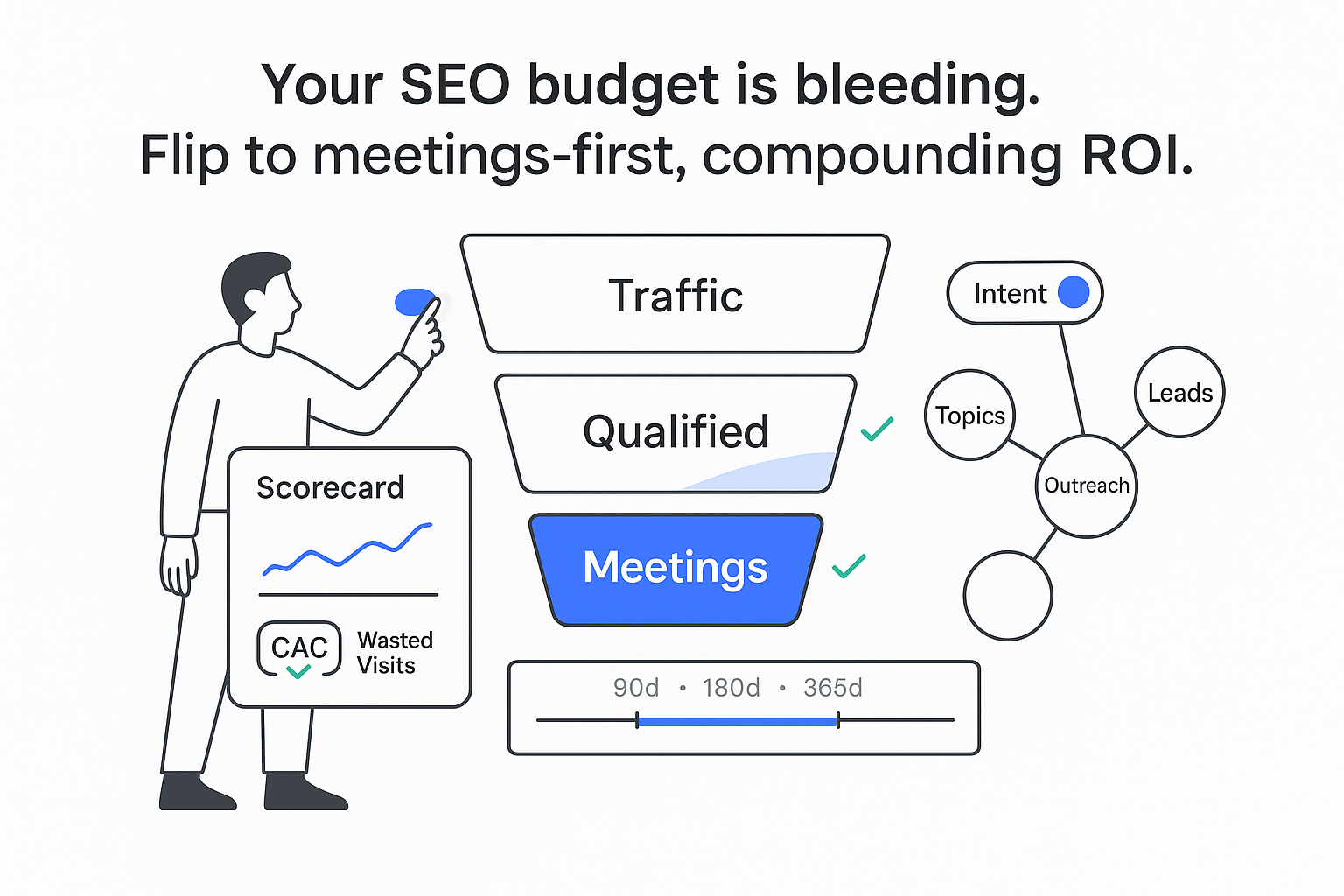

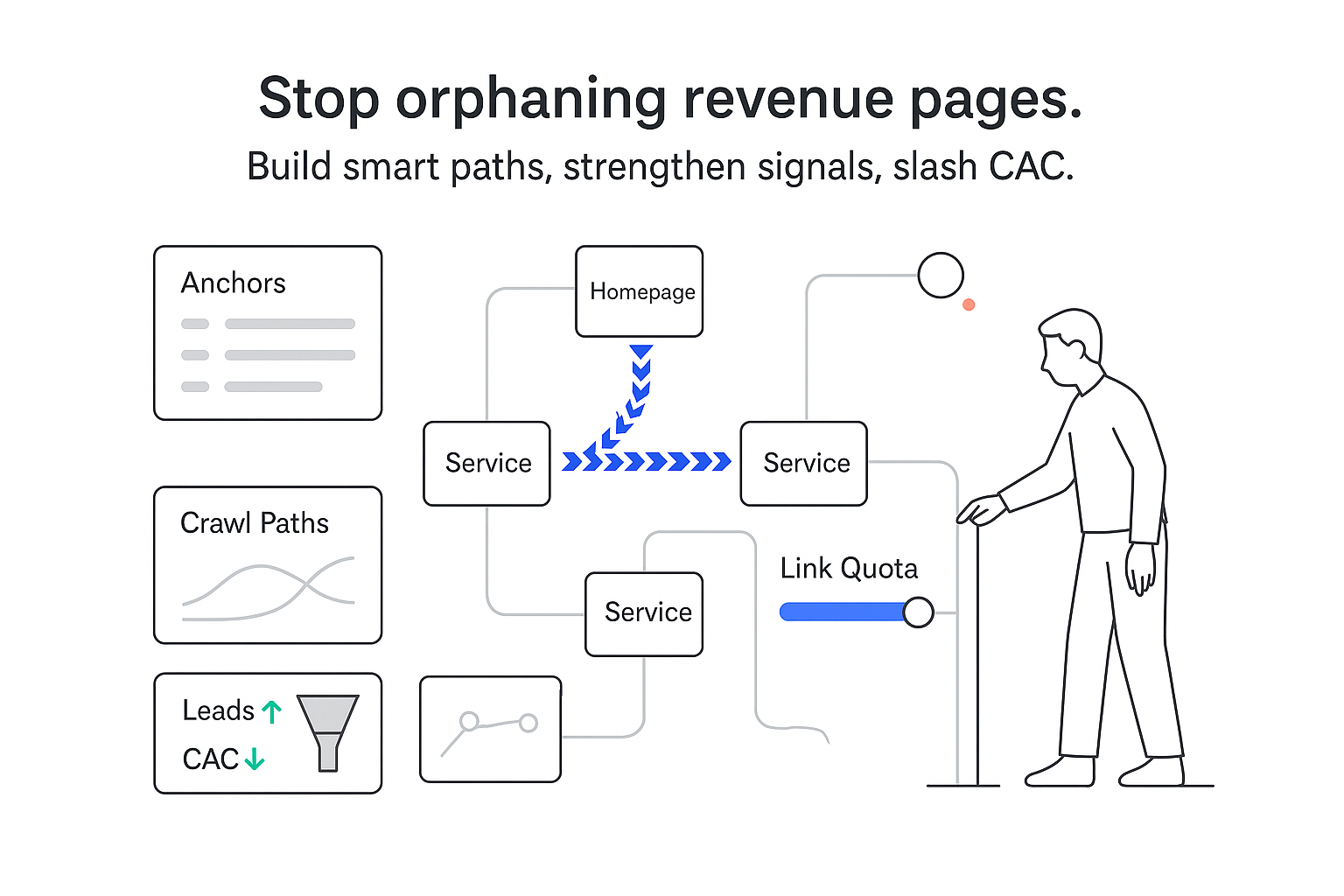
.svg)